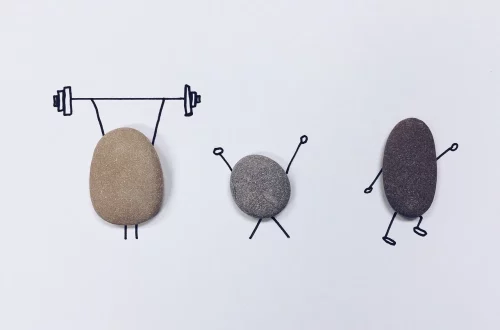
Can Minoxidil Cause Hair Loss Instead of Preventing It?
Minoxidil is widely recognized as a topical treatment option for hair loss, particularly for conditions such as androgenetic alopecia, commonly known as male or female pattern baldness. Originally developed as a medication for hypertension, its hair growth-promoting properties were discovered somewhat accidentally, leading to its popularity as a hair loss remedy. While many users report positive outcomes, a significant number also express concerns about experiencing hair loss after starting treatment. This phenomenon raises questions about the reliability of minoxidil as a solution for hair thinning and balding.
Understanding the dynamics of hair growth and loss is crucial in addressing these concerns. Hair growth is a cyclical process influenced by various biological factors, including genetics, hormones, and overall health. When individuals begin using minoxidil, they may notice an initial shedding phase, which can be alarming. This shedding, often referred to as “telogen effluvium,” is a normal part of the hair growth cycle and can sometimes lead to confusion regarding the efficacy of the treatment.
As more individuals look for effective solutions to combat hair loss, it is essential to delve deeper into the relationship between minoxidil and hair loss, exploring both the potential benefits and the side effects that some users may experience. By doing so, we can provide a clearer picture of what to expect when using this treatment.
Understanding Minoxidil’s Mechanism of Action
Minoxidil works primarily by promoting vasodilation, which increases blood flow to the hair follicles. This enhanced circulation is believed to provide hair follicles with more nutrients and oxygen, potentially stimulating hair growth. The mechanism of action involves transitioning hair follicles from the resting phase (telogen) to the growth phase (anagen). However, the exact biological processes underlying these effects are not fully understood.
When a person begins using minoxidil, the hair follicles may undergo a temporary cycle of shedding before new hair begins to grow. This initial shedding phase can be disconcerting for users, leading them to believe that the treatment is causing hair loss rather than promoting growth. It is important to recognize that this shedding is often a normal part of the hair renewal process.
In some cases, minoxidil may cause the hair follicles to shed weaker hairs, making way for stronger, healthier hair. Users who experience this initial shedding often report that hair growth improves over time, as the follicles adapt to the treatment. However, individual responses can vary significantly. Factors such as the severity of hair loss, duration of treatment, and personal health conditions can all influence the outcome.
It is essential for users to have realistic expectations when starting minoxidil. The process of stimulating hair growth can take several months, and patience is key. Understanding how minoxidil interacts with the hair growth cycle can help users navigate the initial phases of treatment more effectively, reducing anxiety and fostering a more positive outlook.
Common Side Effects and Their Impact on Users
While minoxidil is generally well-tolerated, some users may experience side effects that can contribute to the perception of hair loss. Common side effects include scalp irritation, dryness, and an increased heart rate. These reactions can vary in severity and may cause some individuals to discontinue use.
Scalp irritation may manifest as redness, itching, or flaking, which can be uncomfortable and lead users to believe that the product is having adverse effects. Additionally, if minoxidil is not applied correctly or if excessive amounts are used, it may exacerbate these side effects. Users should adhere to the recommended dosage and application methods to minimize discomfort.
Increased heart rate, known as tachycardia, is another potential side effect that can be alarming. Though rare, some individuals may experience this reaction, particularly if they have underlying cardiovascular conditions. Those who notice significant changes in their heart rate or other concerning symptoms should consult a healthcare professional.
It’s crucial to differentiate between normal side effects and more serious reactions. Users should monitor their bodies’ responses during treatment and seek medical advice for any alarming symptoms. Understanding the potential side effects of minoxidil can empower users to make informed decisions about their hair loss treatments.
The Psychological Effects of Hair Loss and Treatment
The emotional toll of hair loss can be profound, impacting self-esteem and overall quality of life. The psychological effects of hair thinning or balding often lead individuals to seek treatment options like minoxidil. However, the experience of initial shedding can exacerbate feelings of anxiety and frustration, particularly if users equate shedding with failure.
Addressing the psychological aspects of hair loss is essential for individuals undergoing treatment. Many people may find comfort in connecting with others who share similar experiences, whether through support groups or online forums. Sharing stories and strategies can help alleviate the emotional burden associated with hair loss and treatment.
Additionally, setting realistic expectations regarding the timeline and results of minoxidil treatment can improve mental well-being. Understanding that hair growth is a gradual process and that initial shedding is a typical response can help users cope with the emotional rollercoaster that often accompanies hair loss treatment.
Moreover, some may benefit from professional counseling to address the psychological effects of hair loss. Mental health professionals can provide coping strategies and support that may enhance the overall treatment experience. Emphasizing the importance of mental health in conjunction with physical treatment can foster a more holistic approach to managing hair loss.
When to Consult a Healthcare Professional
While many users tolerate minoxidil well, it’s important to recognize when to seek medical advice. Individuals who experience significant or persistent hair loss after starting treatment should consult a healthcare professional. A healthcare provider can help determine if the ongoing loss is due to the treatment or if other underlying issues may be contributing to hair thinning.
Additionally, individuals with pre-existing health conditions or those taking other medications should discuss the use of minoxidil with their healthcare provider. Certain health issues or drug interactions could influence how the body responds to the treatment.
Monitoring overall health and being proactive in seeking medical advice can make a significant difference in the effectiveness of hair loss treatments. Healthcare professionals can provide personalized guidance and alternative options if necessary, ensuring that users feel supported throughout their journey.
In conclusion, the relationship between minoxidil and hair loss is complex. While some users may experience initial shedding, understanding the underlying mechanisms and psychological effects can help alleviate concerns. As with any treatment, individual responses can vary, and it’s essential to approach the process with patience and realistic expectations.
**Disclaimer:** This article is not intended to serve as medical advice. For any health issues or concerns, please consult a healthcare professional.




